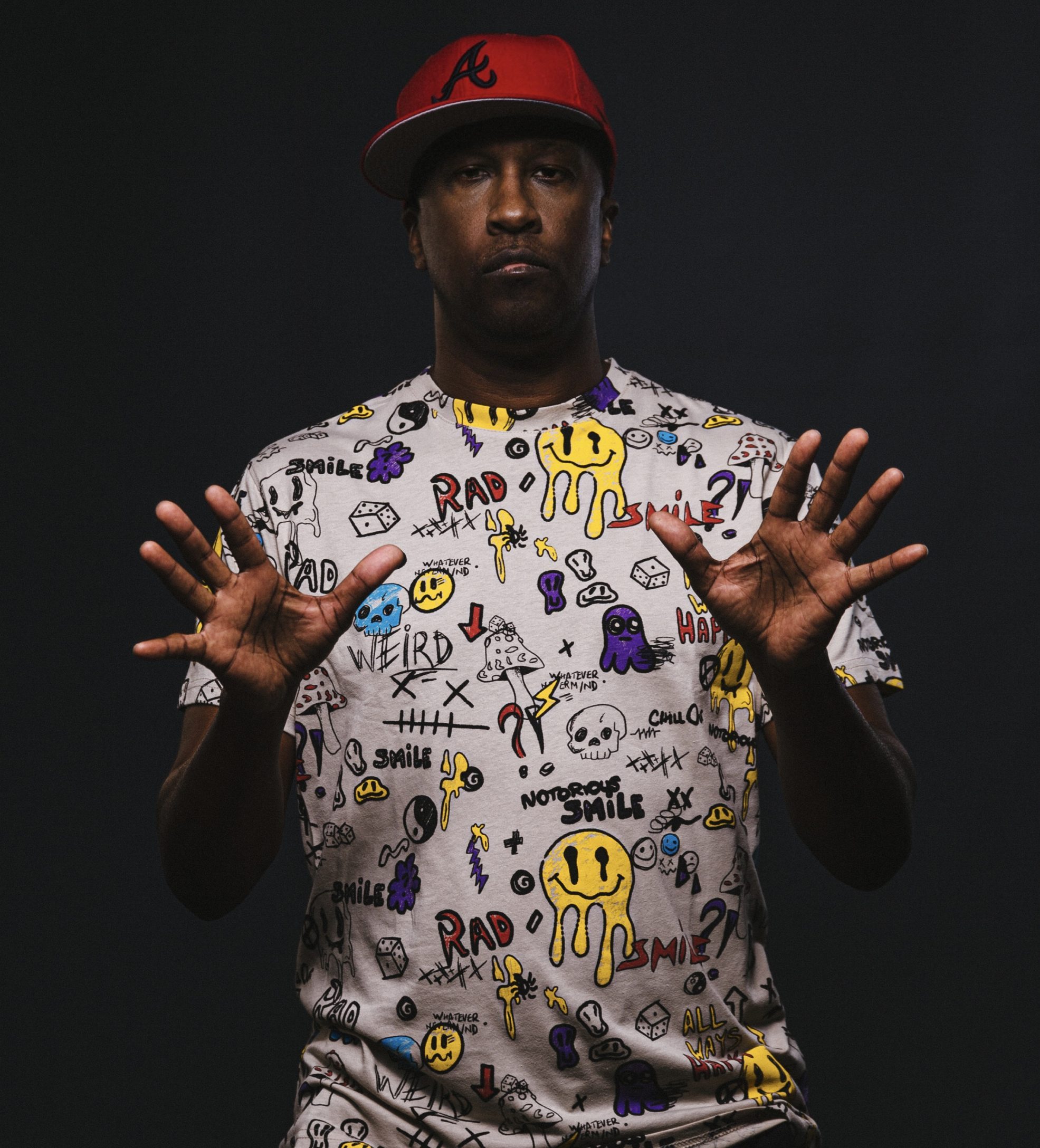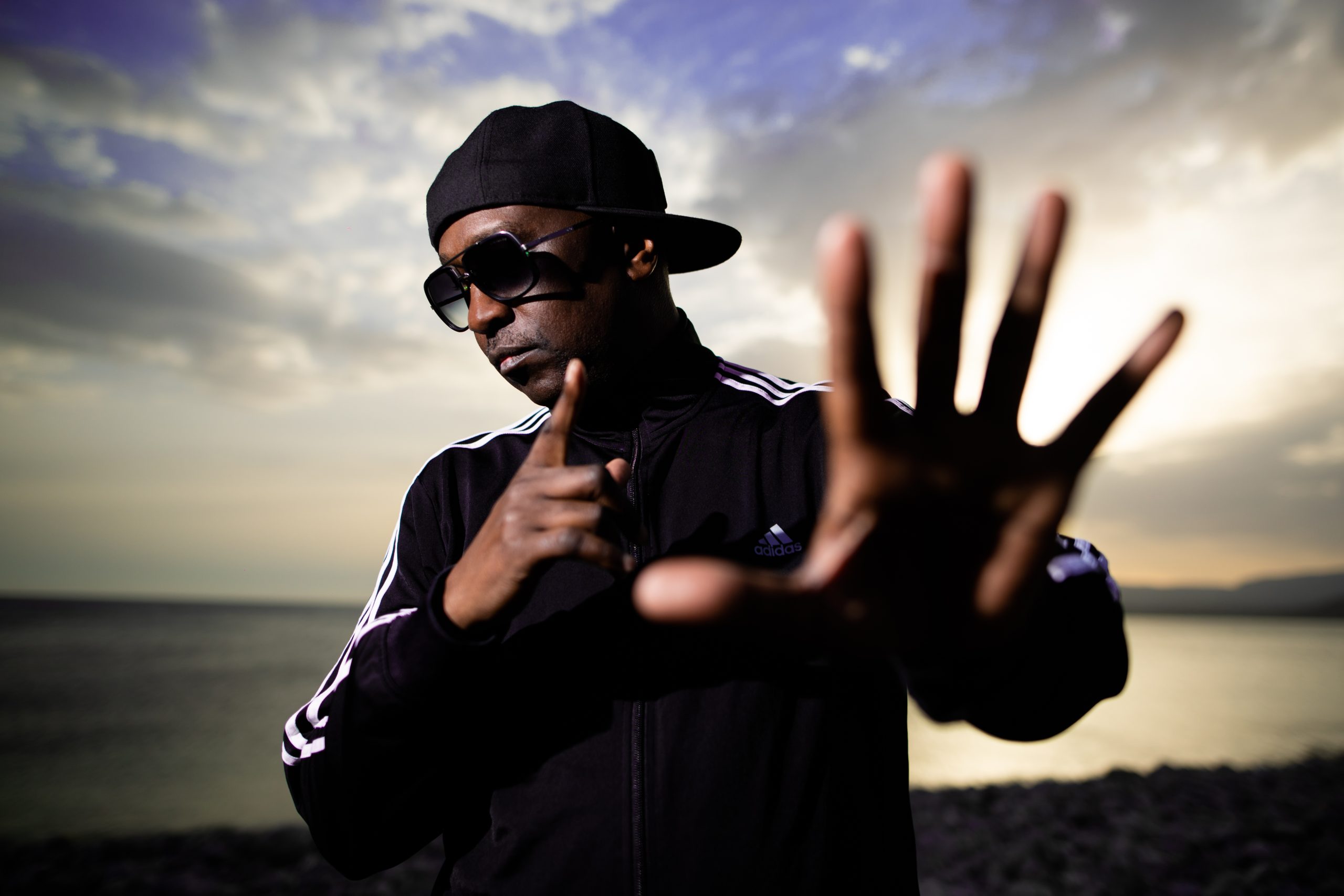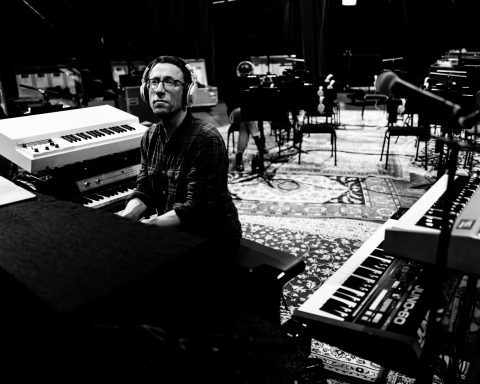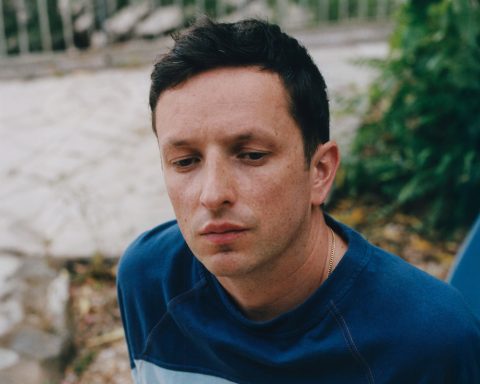Brooklyn-born DJ and producer Todd Terry was among the first to use sampling to move above and beyond the Chicago house sound in the mid-to-late ’80s. His solo productions and collaborations with Masters at Work were seminal to New York club music and the UK’s acid house scene. In addition, Terry’s use of tape and early Roland drum machines were crucial tools in his armory. Welding disco samples to hip-hop-charged breaks, releases under pseudonyms like The Todd Terry Project, Royal House, and House of Gypsies have retained their authenticity. Find out what makes this prolific dance music legend tick.
The Master at Work
What’s your earliest memory of discovering various technologies to make music with?
One of the first drum machines I bought was the BOSS Dr. Rhythm DR-55. It was the cheapest thing I could find, so I saved until I got it. At first, I couldn’t figure it out and had nothing to hook it up to. But it stored up to six 16-step drum patterns, so I kept studying it until I could type in those beats. I knew that if I could work that, I could work anything and conquer the world.
Did you genuinely have a master plan?
I was already DJing, but my idea was to cut the breakbeats with a drum machine, make them sound good, and go into a studio to make a record. In those days, records would scratch to the beat, so my main influence came from tracks like The B-Boys’ “Two, Three, Break” and Cut Master D.C.’s “Brooklyn’s in the House.” The first record I tried to copy was Shannon’s “Let the Music Play.” I tried to mimic all the basslines and synthesizers, and that’s how I learned to play keyboard. But everything changed when I went to England and realized how popular house music was getting. It had started to boom.
Creative Space
What gear did you use when working with Masters at Work on essential mid ’80s cuts like “Alright, Alright” and “Dum Dum Cry”?
For some Masters at Work and Royal House stuff, I was cutting certain parts to tape, then looping and resampling them to save space because the machines didn’t have much memory. I got a drum machine that had four sample pads—kick, snare, clap, and hi-hats—and made beats with that and put the sounds into a four-track tape recorder. Then I had to bounce the bassline and other music to the other three tracks because that’s all the machine had. It was a hard deal, but only having a certain amount of space makes you more creative.
“I was cutting certain parts to tape, then looping and resampling them to save space because the machines didn’t have much memory.”
Is that DIY approach something that many modern artists miss out on?
I wanted my records to sound ghetto and dirty, but everybody started making plush and perfect records. Now we’ve gone too far into the box. People can press a few buttons, and everything has become setup city, but that takes all the fun out of it. I used to literally play keyboards to the end of a record and add claps and percussion in live. It felt better to sit there playing and playing until I got it right. And that approach made everything sound funky, whereas now you program in three or four bars, and the record’s done.

New Technology
When did you come across Roland drum machines and start to use them in your productions?
I worked in a Sound Lab studio in Brooklyn’s Sheepshead Bay area, where D Train used to work out of. That was the first time I saw a Roland TR-808 drum machine. I remember thinking, “Wow, look at all those buttons.” But I didn’t use one until I worked at Power Play Studios in Queens. I would use the Roland for certain sounds and put them into a sampler. Mixing those technologies allowed me to work on the Masters at Work records we spoke of.
“The first time I saw a Roland TR-808 drum machine, I remember thinking, ‘Wow, look at all those buttons.’”
How influential was the JUNO-106 on your classic mid ’80s productions like “Weekend,” “Party People,” and “A Day in the Life”?
I worked hard to get a JUNO-106, and once I had that, it became my prize keyboard. I was using it to make hundreds of kicks, snares, and all sorts of weird stuff. And those JUNO sounds were prominent on all the records I made for the next five to ten years. I even tried to use the JUNO as a drum machine because I wanted to sound like Kraftwerk, but they made their own gear. I had pots and pans.
Did you embrace digital technologies when they came along?
Around 1987, I used the D-50 alongside the JUNO, and that was an amazing keyboard. The bells and the Fantasia sound were unbeatable because they were airy and floaty, making your records sound authentic. I embrace digital plug-ins too, but they lack the punch I’m sometimes looking for. So now and then, I’ll plug my keyboard in and use it as an instrument.
I had the original TR-909 out for a while recently, although one of the buttons is broken, and the 303 still plays pretty good. Two of the keys on my 606 are also broken, but I’ve figured out how to circumnavigate that, and I’m too lazy to get it fixed.
A Change of Bass
In the late ’90s, you pivoted to drum and bass with the Resolutions album.
At the time, I was being asked to make so many remixes that sounded like the one I did for Everything but the Girl’s “Missing ” that I got fed up. I wanted to do something a little crazy, and drum and bass was it. I sampled a lot of sounds from Photek and Grooverider and tried to rob their essence. Tracks like “Blackout” and a couple of others were very successful, and I got embraced by the drum and bass guys because I changed their vibe. I was probably the only house guy to pull that off, and now I have Resolutions 2 sitting here, which I’m planning to release later this year.
“I got fed up and wanted to do something a little crazy, and drum and bass was it.”
Back to Feeling Good
New dance music genres don’t seem to have much longevity. Why do you think that is?
There are mad genres these days like deep tech and tech trance; they keep making stuff up every other week. But house music needs to get back to those good-feeling songs like Marshall Jefferson’s “Move Your Body,” CeCe Peniston’s “Finally,” or tracks by Ten City and Crystal Waters. The problem is that you can make a record like that, but the radio won’t play it, which is discouraging. I’m trying to beat the songs into their heads, so hopefully, they’ll play some of them this year and let me get to the crowd.

Are your productions entirely in the box these days?
Every track is different. If it gives me an old-school essence that needs some fuzz and warping, I’ll go out of the box to get that air and dirt. But I like what Roland Cloud did with the ZENOLOGY, JUNO-106, and D-50 plug-ins. The Roland Drum Machine Collection is also interesting. The sounds are good, and they cut through a mix well. I’m proud that Roland has figured out how those tools can work well within the computer.







